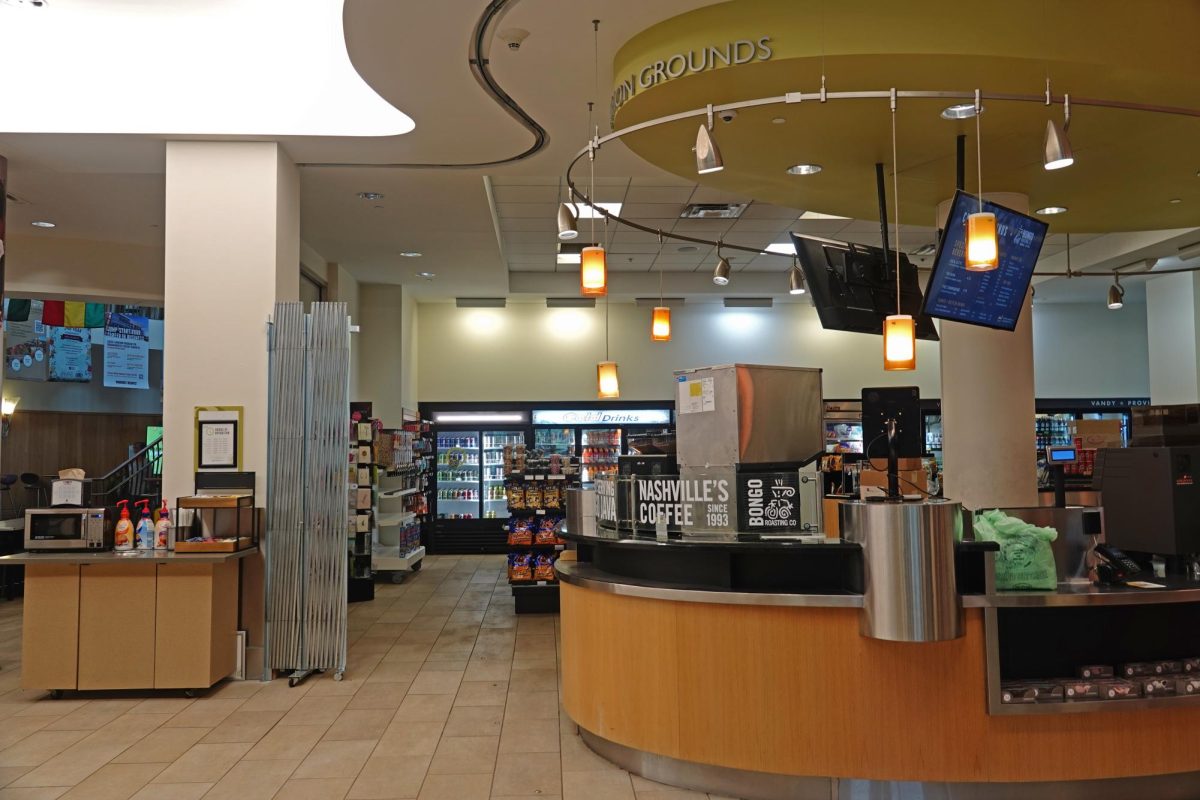“You are what you eat.”
It’s a phrase that most of us have heard many times before, touting the importance of balanced diets and good nutrition to sustain ourselves. Although Campus Dining has previously faced issues and blowback for choices made during my time on campus, I still found it a relatively easy process during the past two years to find healthy, enjoyable food throughout the week. This year, however, Vanderbilt Campus Dining rolled out a host of “enhancements” to the dining program that have led to some glaring unintended consequences.
After the first few weeks of eating on campus this year, student feedback and simple observation of dining locations have made it apparent that Campus Dining has created some extensive problems for itself concerning dining accessibility. It is us, the students, who are paying for these problems — both literally and figuratively. As these issues persist and students become more and more frustrated, it is abundantly clear that Vanderbilt Campus Dining has not only misunderstood what a university dining program must accomplish as a core aspect of student life but is fundamentally failing its students in its lack of response to newfound critical issues.
First, let me provide an overview of the various changes that purportedly arrived on campus this fall semester: One new cafe has opened in Carmichael Residential College, two new locations opened in Rand Dining Center while one location, 2301, featuring allergen-friendly sauté bowls has moved to E. Bronson Ingram Residential College. Additionally, various other locations have received new offerings and hours. Upon first glance, many of these changes appear indisputably positive. After all, who can complain about increased dining options in convenient, central locations? However, upon closer inspection, options have not meaningfully increased — in fact, far from it.
While it is true that one truly “new” location has appeared — Carmichael Cafe — the other changes touted as “improvements” are merely location changes. Vandy Blenz’s smoothies and açaí bowls, as well as pizza from Commodore Pizza Kitchen, existed before on campus, though not in the same location: Smoothies were at 2301, açaí bowls were housed in the Kissam Center and pizza could be found at Commons or Zeppos depending on the week. This explanation brings me to the first major issue introduced by this year’s changes: consolidation and overcrowding. These three classes of food were previously separated from each other, ensuring that the people who wanted pizza, açaí or smoothies would not converge on the same area; now, the opposite is true. Rand Hall, which was already the main dining center and experienced significant crowding during the weekday lunch rush, is now nearly impassable at that hour due to the convergence of many desirable options in the same building, creating a stressful environment for both students and dining staff.
It seems that Vanderbilt Campus Dining potentially foresaw these inefficiencies, as they stated in their announcement of this year’s “enhancements,” that they intentionally diversified the offerings of the various Residential College dining halls so they each have a static, unique identity. However, this change has actually contributed to the problem instead of alleviating it. Before this year, while some dining halls had a unique station not found elsewhere on campus, they also had consistently rotating culinary options, ensuring that the foods students desired constantly changed locations. This year, as students have learned the standardized options and their own preferences therein, the most desirable dining halls have become consistently overcrowded — especially during weekday dinners when Rand is closed — while other locations can be nearly empty, only contributing to the uneven concentration of students across campus.
The other significant change by Campus Dining this year has made it inconvenient to eat: inadequate hours. During the week, nearly every location is open for lunch while Rand closes its doors for dinner; this schedule is the same as in previous years. One glaring issue, however, bares its fangs every week on Friday afternoon, when every dining option on main campus except for Rand closes its doors until Sunday morning. This issue means that the many students who live in Residential Colleges, previously enjoying full Saturday dining hours, including student-favorite brunch offerings, now must walk to a single location, eliminating one of the greatest benefits of living in a Residential College — convenient, in-building dining for a large part of the week. (Commons Center, the only other dining option, is over a fifteen-minute walk from all other Residential Colleges.) In addition, this massive decrease in dining hours also causes another major time when a large portion of students are forced into very few options, leading once again to significantly unequal student distribution across Vanderbilt Dining.
So, let’s review, shall we?
First, students are meaningfully forced to overcrowd locations through the centralized locations of popular options during the week as other dining options stagnate. Second, students are then literally forced together through the closing of nearly every dining option on campus for a day and a half on Friday nights and Saturdays — the exact moments when busy students have the greatest ability to access dining halls and desire something different than the food options in Rand — the options of which many students eat nearly every day for lunch. As a result, the act of eating has transformed from a rejuvenating respite during consistently hectic and busy days into a dreaded aspect of life that contributes to the constant stress and struggle of student time management. In some cases — when the lines are particularly bad — I have even decided to forgo eating a meal out of lack of time or a simple desire to avoid the painful struggle of navigating Campus Dining. This is not how a university should treat its students — implementing ill-advised changes at their expense — and we are understandably embittered.
As the full variety of consequences brought about by this year’s dining “enhancements” have become painfully apparent, one is forced to ask the question: How did Vanderbilt Campus Dining not see all of this coming? There are two potential answers.
The first answer is that they simply did not foresee any issues with the new changes and showed an incredible lack of forward thinking about basic principles of human organization. Anyone who has ever stepped foot inside Rand Hall during weekday lunch would tell an administrator that adding any additional dining offerings to that space would be a colossal mistake. While this option, if it were the case, shows a fundamental disconnect between administrators and the experience of their students, it is difficult to imagine a world in which Campus Dining believed there would be no problems with any of their changes, including adding new dining options to the busiest location on campus and gutting weekend dining options in Residential Colleges, one of the entire principles of which is convenient dining access.
The second potential answer — that Campus Dining did foresee these issues but went ahead with their plan anyway, understanding the negative effects these changes would have on students while also increasing the price of the meal plan by hundreds of dollars and understanding that students have no alternative, as the meal plan is mandatory — is inexcusable, but appears much more likely. The unfortunate yet probable reality is that Campus Dining administrators understood the various ways these changes would negatively affect their students but gave the green light anyway for one simple reason: It was cheaper. With the advent of the new academic year, Vanderbilt Dining can boast a technically greater amount of dining options while spending less money on dining staff. One can only imagine that they hoped the immediate novelty and bright branding of the new offerings would blind students to the tangible downsides to nearly every change made in the process as they bumped the prices of meal plans by hundreds of dollars.
At the end of the day, the greatest failure by Vanderbilt Campus Dining is not the implementation of these adverse modifications touted as “enhancements” or the underlying avarice. It is the failure to maintain transparency and solicit student feedback while considering major developments. It seems obvious that obtaining the input of students, the people who eat campus food and experience the dining process every day, should be a high priority for Campus Dining administrators when considering any sort of sweeping changes. While Campus Dining releases an annual student survey in the spring, there was no opportunity for the student body to provide feedback on this year’s proposed changes, which were not announced until summer. I do not pretend to understand the complex inner workings of any large-scale campus program, and I am sure that there are many concrete, data-driven reasons for this year’s changes. What I am an expert on, though, along with every other student at this university, is the actual day-to-day knowledge of what students like to eat, which locations function efficiently versus which don’t and what we most wish would be improved — none of which were reflected in Campus Dining’s decisions. It is disheartening as a student to witness firsthand such a profound disconnect between the decisions of the people in charge and the lives of the students who have to live with them.
What all of this information boils down to is the fact that instead of ensuring that students have access to nutritious, accessible and high-quality meals throughout the week, it feels like we, the students, are the ones being eaten. While Campus Dining made a few quick adaptations soon after the start of the school year due to student outcry, including expanding the hours of a select few locations, it is nowhere near enough: Nearly every dining hall is still closed on Friday nights and Saturdays and overcrowding continues to plague popular spots at various important times of the week. It is difficult not to feel slighted by the host of “enhancements” rolled out by Campus Dining that have manifestly limited options instead of expanding them while the cost of all meal plans, which are mandatory for on-campus students, significantly increase.
I understand that it takes time to assuage such sweeping issues across campus. From a certain perspective, the various negative effects that appeared on campus could even be considered positive solely in the fact that they revealed greater, systematic problems at their roots — for example, take the inefficient, cramped layout of Rand Hall, which no rotation, addition or removal of dining locations will fully mitigate. Still, there are undoubtedly various avenues by which administration could address at least the most glaring failures; as these roads remain untaken, I find myself looking toward Campus Dining with a fatigued lack of empathy, wondering with indignation why such glaring insufficiencies were even allowed to emerge at all.
Whether Campus Dining will find a way to create meaningful positive change in the coming weeks or months remains to be seen. Until then, students are left eating what, when and where we can, only becoming more bitter with time.








